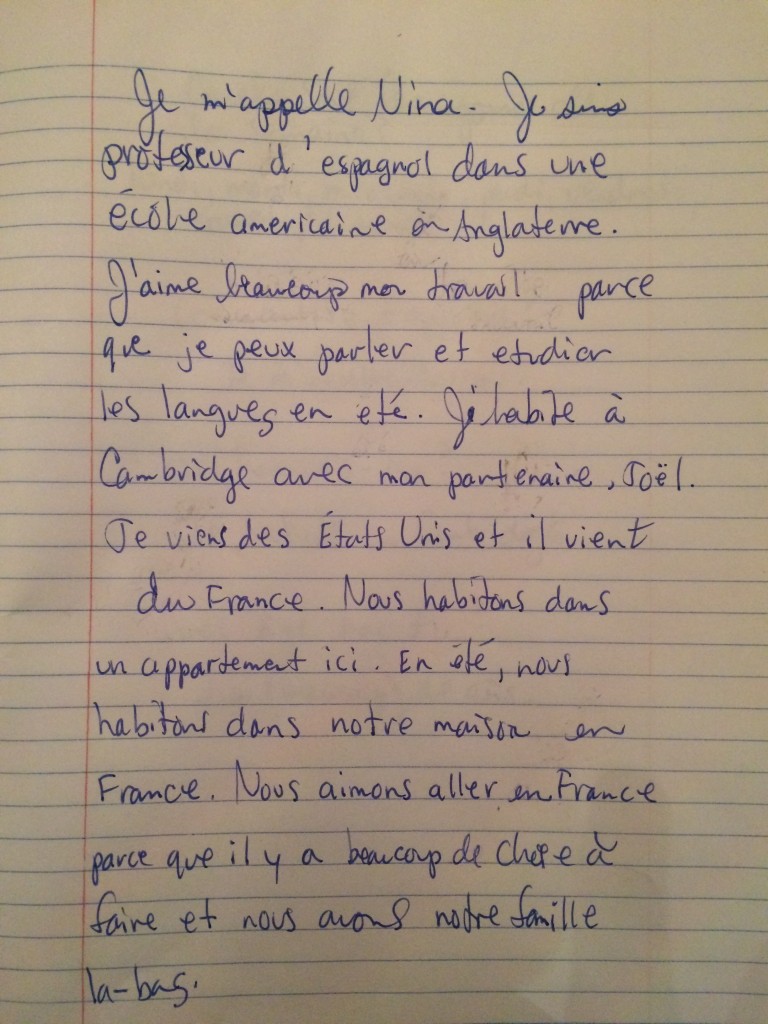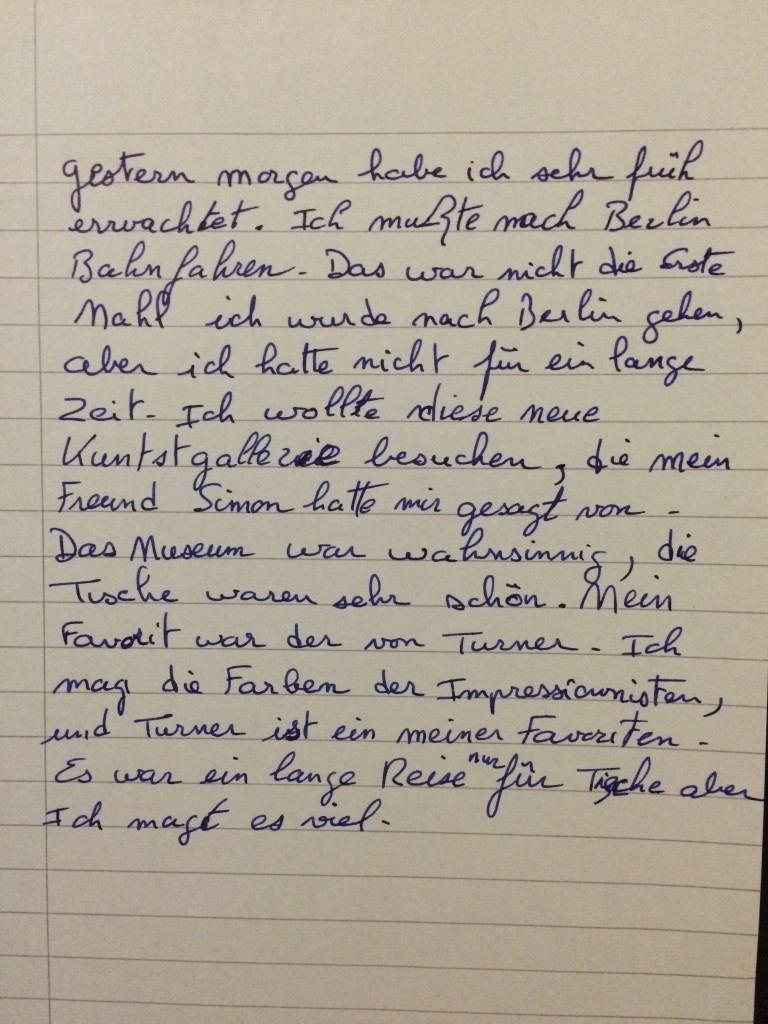Do you want an amazing way to build fluency in any language, at any level? If so, you should definitely try fluency journals if you’ve not done so thus far. They work great for independent language learners as well as structured classes. Basically, this is how it works. It doesn’t matter what the level is, what the topic is, you have a task. A task that you want to learn, or that you want your students to learn, something that you want people to be able to do in the target language. Let me give you some concrete examples.
Let’s pretend that I need to complete the task of returning something to a store. Or I want to learn how to talk about my family. What’s cool about a fluency journal is you can set a timer. Use your iPhone or something like online stopwatch. With groups of people, particularly younger kids, I like to use big sand timers because that way they can see how long they have.
You have the topic, and whether you’re giving the topic to your students or you’re doing the topic yourself, you’re going to set the timer and you’re going to tell yourself or whoever to write as much as they can about the task in as much detail as possible. For a beginner of French, I might say, talk about your family. During that time, the person can just write as much as they can about their family. Maybe they want to talk about who is in their family, where their family is, what the different people in their family are like, or what the relationships are like. Maybe if you’re a little bit more advanced, you might use this as an opportunity to compare and contrast family structures in the target language and your culture. What’s the same, what’s different? What would it have been like to grow up in a French family?
Whatever that topic is, you’re going to time it. If we go down to that novice level, that beginning words and phrases level, what that might look like in your class? They might be writing some words and phrases and trying to make sentences. If they’re very advanced, you might be very quickly writing long paragraphs or entire pages of text. But the whole point is to practice fluency on a certain topic. One thing that I really like about this activity is that it has some huge benefits. When you sit down to write, I wouldn’t allow myself any vocabulary, any dictionaries or any help. For a really novice learner, you might want to go ahead and map out a couple of those things beforehand. Perhaps jot down some vocabulary, or review vocabulary to talk about family, or about adjectives to describe people, whatever.
What’s really great about this is there’s no pressure- the kind you might get in a conversation where you feel a bit stressed when you’re trying to create language and trying to really express an idea in a conversation. It’s fantastic. So you can just sit down, be on your own, and practice fluency. What would you say if somebody asked you about your family? Or any of those different topics that we talked about? There’s no pressure. What’s great is if you don’t allow yourself any dictionaries or any help or glossaries, you’re going to find you are filling in your gaps. You’re going to find all your gaps. You’re going to find out what you don’t know how to say, and that’s going to prompt you to go back to your notes, go back to your teacher, go back to your dictionary, or your students to you if you’re a teacher. And you’re going to find out what you don’t know. Then you’re gong to be able to dig back and find those things.
One way that I love to use this is in my classes, of course, because it’s a fantastic fluency builder. You get to see really naturally what can they do. What I really like to do is, make all their corrections and give them really detailed feedback. But as a learner, I like to do them and hand them to a native speaker and get the corrections. Then I study the corrections and know exactly what I could have done a little bit differently.
What I want you to see next are a few examples of these fluency journals. There’s one of a learner of German. He is talking about a trip that he took. The other one is an early French one of mine. You can even see some of the erase marks. I went and had it corrected by a native speaker, and then I went back and rewrote it and with the corrections.

